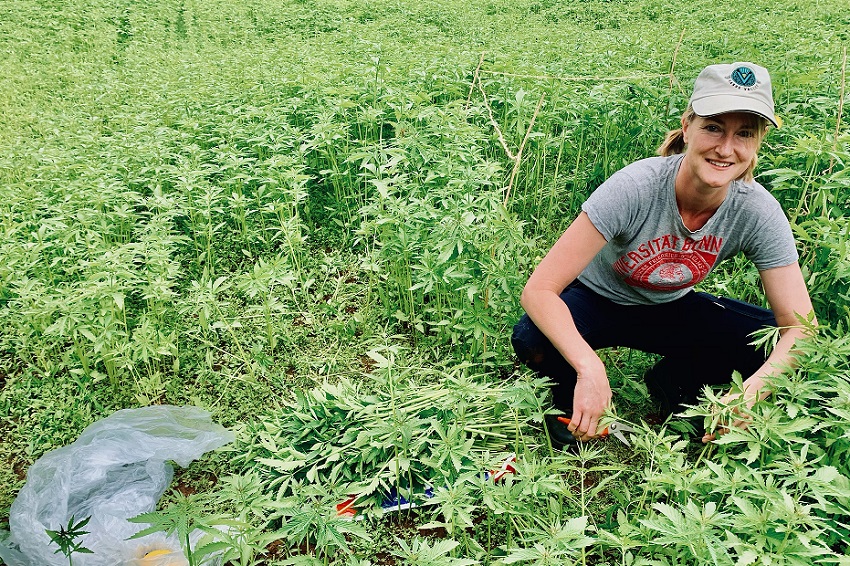
Industrial hemp has shown promise as a potential high yielding, multi-purpose, summer feed option for livestock following results of a pilot project.
The ‘Opening the gates to hemp grazed livestock in Australia’ pilot was led by the Department of Primary Industries and Regional Development, Western Australia (DPIRD) and funded by AgriFutures Australia, in collaboration with the ChemCentre and Charles Sturt University.
The results from the first phase of the pilot project have opened the door to further research to explore the nutritional value and channels to meet market regulations for the possible forage crop.
Grazing livestock on hemp crops could lead to the accumulation of tetrahydrocannabinol (THC) from the hemp plant in the animal’s tissues and detectable levels could transfer to meat, milk or other animal products.
Australian regulations require animal products to have no detectable levels of THC residues.
DPIRD project lead Bronwyn Blake said the pilot experiments on Merino wethers showed there were no adverse effects on feed intake or animal performance from consuming hemp stubble.
Rather, Dr Blake said the results suggested production gains could be attained from sheep fed industrial hemp.
“The 15 sheep in the house-based study in New South Wales were fed hemp pellets made in WA from the industrial hemp variety Morpeth Late, which was selected based on its slightly higher THC content to push the parameters,” she said.
“The sheep were fed three diets and five replicates per treatment and measured for digestibility, performance and carcase traits over a period of 56 days.
“The experiment showed the digestibility of dry and organic matter were higher for both hemp diets compared with the control, though it is not clear why.
“The most profound outcome was the increase in minor volatile fatty acids, suggesting an improvement in energy availability and a change in the composition of the gut microbial population, which may account for the improved digestibility.”
While THC was detected in all measured tissues at extremely low levels, which would not meet regulatory requirements, Dr Blake said the results were still encouraging.
“The results suggest there is plenty of scope to develop management practices for feeding hemp biomass to ruminants, like sheep, goats and cattle, which may meet regulatory requirements for zero THC levels in animal products,” she said.
The project has progressed to Phase 2 to investigate the pathways to market for livestock fed hemp, including clearance rates for THC.
Dr Blake said she was excited about the next phase of the project, which could generate opportunities to use the whole hemp plant as a forage feed option for livestock.
“Phase 2 will provide valuable insight into the half-life, or breakdown, of THC in sheep and cattle and how long it takes for THC to be eliminated from various tissues in animals fed industrial hemp,” she said.
“Ultimately, this research will provide the foundation from which an Industry Code of Practice could be developed to feed hemp forage to ruminants and create an opportunity for this useful, diverse crop to be integrated into the whole farm business.”
For more information about growing industrial hemp in WA and other projects, go to Industrial hemp in Western Australia.
Media contacts:
Dr Bronwyn Blake, research scientist 61 8 9780 6225
Megan Broad/Katrina Bowers, media liaison 61 8 9368 3937
Picture caption: DPIRD research scientist Dr Bronwyn Blake has been working on a collaborative project in which industrial hemp has shown potential as a high yielding, multi-purpose, summer feed option for livestock.


